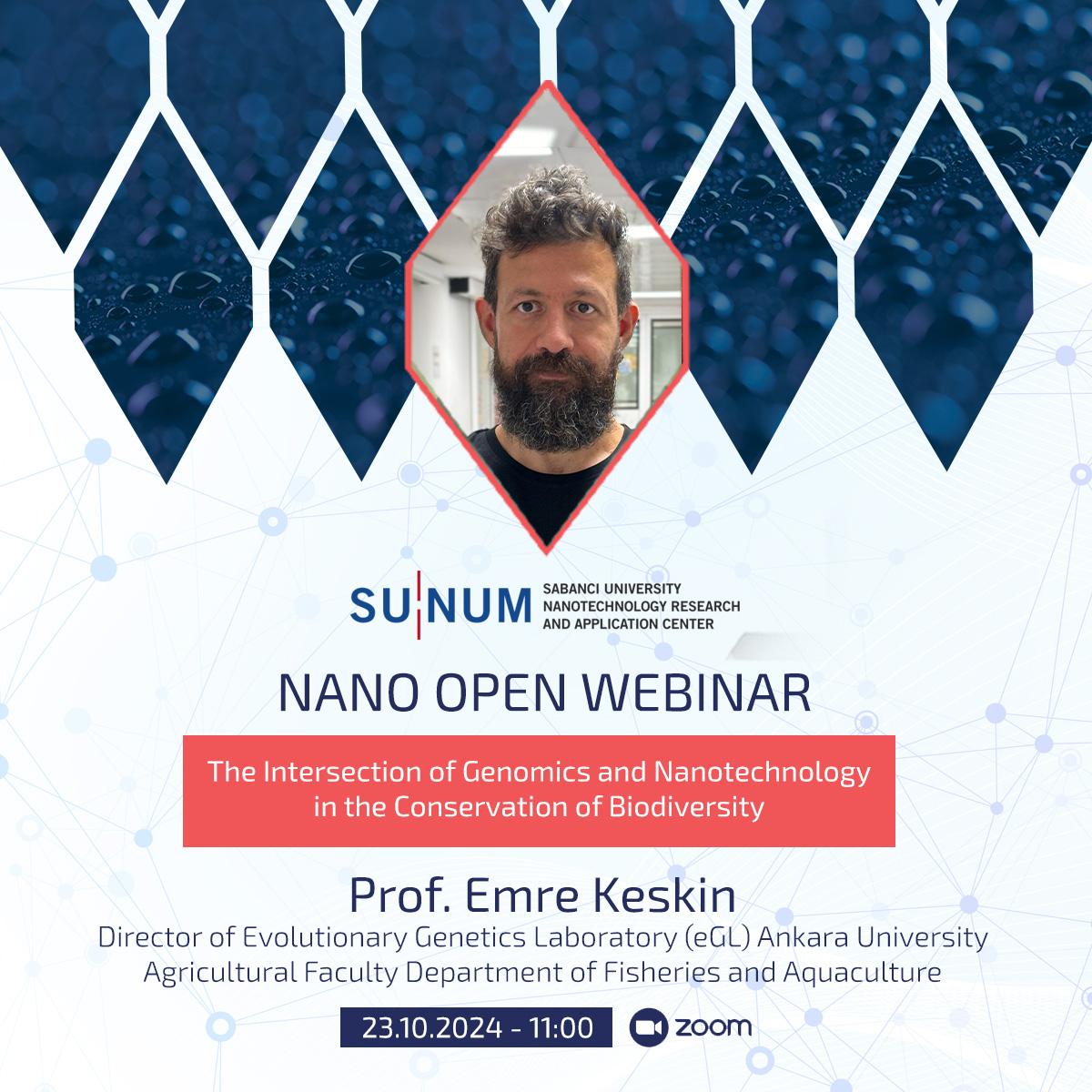-

- About Us
- Research
- People
- Infrastructure
- Projects
- Partnerships
- Our Platforms
- Publications
- Training / Event
- mySU
- Online Reservation
- sunum@sabanciuniv.edu
- SUNUM e-Store
- 360° SUNUM
- Intranet

Prof. Emre Keskin, Ankara University Faculty of Agricultural, Department of Fisheries and Aquaculture, and is also the Director of Evolutionary Genetics Laboratory (eGL), will be the guest at the Nano Open Webinar on Wednesday, October 23, 2024 between 11.00-12.00 at Zoom.
Prof. Emre Keskin, will talk about the intersection of genomics and nanotechnology in the conservation of biodiversity.
The combination of genomics and nanotechnology in biodiversity conservation is revolutionizing the monitoring and management of ecosystems. Genomic techniques analyze the genetic diversity and population structure of species in detail, while nanotechnology plays an important role in speeding up these processes, increasing their efficiency and improving the precision of environmental DNA (eDNA) analysis. The integration of these two disciplines has great potential in developing innovative approaches for monitoring threatened species, preventing the loss of genetic diversity and sustainable ecosystem management.
To register for the Nano Open Webinar, which will be held on Zoom on October 23, 2024, at 11:00: otolab.sabanciuniv.edu
About Prof. Emre Keskin
Emre Keskin is an evolutionary genetics expert at the Evolutionary Genetics Laboratory (eGL) of Ankara University and is also one of the working group leaders of DNAqua-Net. He serves as the Operation Coordination Unit (OCU) Director of the AgriGenomics Hub: Animal and Plant Genomic Research Innovation Center, which has one of the most advanced genomic infrastructures in the region. He holds a master's and doctoral degree in biotechnology. After completing his PhD, he participated in several EU scientific networks and played a significant role in the development of the conceptual framework for environmental DNA metabarcoding by undertaking the task of identifying gold standard genomic tools and new eco-genomic indices for biological diversity assessments and biomonitoring studies of European water bodies.
His research focuses on the (meta)barcoding of environmental DNA (eDNA) in aquatic ecosystems that host invasive, endangered, and endemic species in extreme ecosystems. His research group employs epigenetic, bioinformatics, and metagenomic methods to study vertebrates, invertebrates, microorganisms, and viruses. He has authored over 60 articles indexed in international databases and has given more than 150 presentations at national and international conferences. To date, he has participated in over 75 national and international projects, serving as the project leader in 22 of them. He is a member of various commissions of six different international organizations, including the United Nations IPBES, IUCN, eRGA, and iBOL.
In recent years, he has focused his work on the integration of multi-omics data with artificial intelligence algorithms in environmental DNA metabarcoding workflows for biodiversity assessment.
